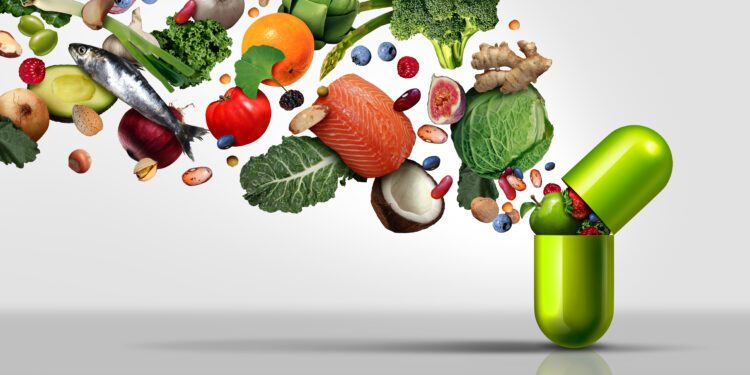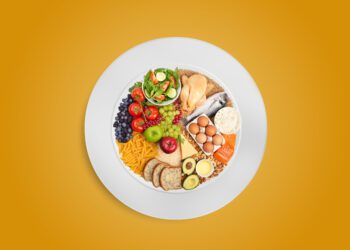With inflation top of mind, it’s difficult for consumers to look beyond price. However, fresh food producers and retailers may find an advantage in connecting consumers to healthy choices.
Shopping stress is rising again, driven this time not by COVID-19 but by the higher cost of food. Inflation affects almost everything for the consumer, from where they shop to what they buy. And that, in turn, is affecting the revenue and profitability of a food industry that is trying to adapt. But, for fresh food producers and grocers looking to compete on more than just price, there may be a bright spot: consistent demand for health and wellness.
While price is swamping the importance of other purchase drivers, 84% of consumers still consider health and wellness when purchasing fresh food. Three in four are actively seeking more personalized nutrition, up 13 percentage points year over year. Moreover, 55% of consumers say they are willing to pay a premium for the right foods because they contribute to their health and wellness.
Saying health and wellness are important is one thing. Putting food to use in preventing and treating specific health needs is another. Information, access, and ease of use are currently barriers the food industry should address.
Fortunately, food producers and retailers may have an opportunity to help consumers overcome these barriers while improving the top and bottom lines. Many consumers say they trust their grocer and would be willing to share some of their medical data and use technology for personalized nutrition.
However, given today’s inflationary environment, the opportunity offered by health and wellness likely cannot be fully understood outside the context of price.
The primacy of price
During the heart of the pandemic, the three Ps—price, preference, and perishability—drove a shift toward frozen foods relative to fresh. Now, with rising inflation, price overshadows almost everything.
For instance, as of July 2022, dollar sales growth in frozen equivalents outperformed fresh food sales year over year. However, on a units-sold basis, both categories shrank, with frozen equivalents declining more than fresh. Why? The likely answer is price inflation. Though starting from a lower absolute price, frozen equivalents experienced about double the price inflation as fresh, and consumers in the survey appear to have noticed
The three Ps and fresh food
Moving past the frozen comparison, “price” is again the top consideration for consumers purchasing fresh food (92%). More consumers say they “prefer food options that are low on price” (85%, up 5 percentage points from 2021). Concerningly, whether justified or not, seven in 10 consumers perceive price gouging and may pull back in their future spending intentions if past patterns hold. Moreover, the willingness to pay a premium for fresh food plunged 9 percentage points year over year to 61%.
Perishability is still relevant but now more of a pocketbook issue. Nearly eight in 10 (78%) consumers consider food waste, likely out of a desire to minimize spending. Lower-income consumers and those using food assistance programs care the most about food waste as a purchase driver—again, suggesting it is a response to higher prices.
In several respects, preference also became a function of price, affecting how consumers view other priorities. Like the pandemic, price inflation is drowning out other considerations. As purchase drivers, sustainability, locally-grown, and non-GMO are lower than their prepandemic levels (down at least 12 percentage points from 2019). Note that each comes with price premiums that fewer consumers are now willing to pay.
How are customers handling price inflation?
Nine in 10 (92%) consumers who recognize price inflation are deploying various strategies to adapt, such as trading to private labels, changing basket size and mix, and cherry-picking sales from multiple stores.
Pulling back on spending
- Nearly half (46%) are buying fewer expensive food items.
- 40% focus on reducing their food waste, taking measures to consume more of what they purchase. The lower a consumer’s income, the more likely they will reduce waste.
Buying cheaper
- Approximately a third of consumers are trading down. Some are switching from name brands to private labels (38%), especially in rural areas (45%).
- Almost one in five are swapping fresh for frozen or other shelf-stable food for cost savings (18%), especially in lower-income and rural groups (nearly one in four).
- 37% say they are shopping for discounted items or using coupons.
Playing the channel game
- One in three consumers is shopping at multiple stores to cherry-pick the best deals, no longer staying for their complete shopping list. This behavior, however, drops significantly for consumers who are single or earning over US$200,000 yearly.
- One in five have switched their primary grocery store to one that offers lower prices (but baby boomers are more loyal).
- 15% say they are reducing their online shopping to avoid paying related fees.
Taking more extreme steps
- Three in 10 consumers have stopped purchasing certain food items altogether—for instance, steak, high-end seafood, and even the little nice-to-have extras.
- 15% used assistance from a food pantry, Supplemental Nutrition Assistance Program (SNAP), Special Supplemental Nutrition Program for Women, Infants, and Children (WIC), or similar programs.
A place to turn: Health and wellness
Amid inflation, it is hard to see how companies can compete on aspects beyond price. According to several consumer product CEOs, muted elasticity in the first half of 2022 broke with historical models. Consumers have savings built up from the pandemic that they are using for necessities like groceries, even at higher prices. But how long can that last? As savings run down and higher elasticity kicks in, what can motivate consumers to spend?
Food as medicine
When it comes to health, food matters. An unhealthy diet is the leading risk factor for death. A bad diet’s role—in cardiovascular disease, type 2 diabetes, and even some forms of cancer—contributes to one in every five deaths globally. And there are other health conditions associated with food, including intolerance and allergies, nutritional deficiencies, and digestive health.
In the United States, over 48 million households have a member with a health condition that needs to be managed through diet. These households represent 60% of Americans and nearly US$270 billion in annual grocery sales, according to Nielsen data, in research published jointly by the Food Industry Association (FMI) and the Academy of Nutrition and Dietetics Foundation.
Many households also face health equity challenges, with food insecurity itself strongly correlated with adverse health outcomes. Roughly 17 million Americans live in food deserts—low-income areas far from grocery stores. They want healthy food but struggle to access it.
by Ed Johnson, Adam Almond, Dr. Jay Bhatt et al.
Read the full report here.












